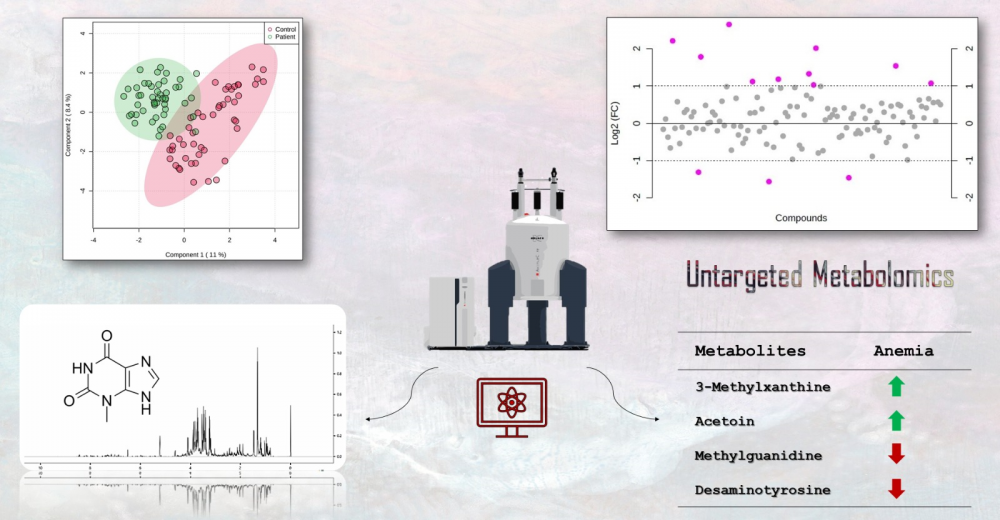JOURNAL 2727
Journal of Chemical Metrology
Year: 2023 Issue: 1 January-June
p.54 - 67
Viewed 1856 times.
-
Metin Demirel

-
Ayşe Zehra Gül

-
Fatmanur Köktaşoğlu

-
Halime Ağaç

-
Ahmet C. Gören

-
Cumali Karatoprak

-
Şahabettin Selek

GRAPHICAL ABSTRACT

ABSTRACT
Iron deficiency anemia is a prevalent type of anemia globally, caused mainly by the deficiency of iron, which is an essential component of various metabolic pathways. In this study, we aimed to investigate the changes in metabolite profiles resulting from alterations in these interconnected pathways. We selected 48 patients with IDA and 48 healthy participants based on diagnostic criteria for iron deficiency. NMR spectroscopy was utilized for metabolite profiling. Chenomx, MetaboAnalyst, and R were employed for data analysis. NMR analysis identified and quantified 119 metabolites. Significant metabolites between the two groups were determined using fold change (FC) analysis and t-test results. The FC values of the metabolite group ranked the following compounds in descending order: Acetoin, 2-Hydroxy-3-methylvalerate, Homogentisate, 3-Methylxanthine, Desaminotyrosine, Succinate, Methylguanidine, Guanidinosuccinate, 3-Methylglutarate, Ethanol, Carnosine, SN-Glycero-3-phosphocholine, and Homocysteine. The IDA patients had increased levels of Acetoin, 2-Hydroxy-3-methylvalerate, Homogentisate, 3-Methylxanthine, Succinate, Guanidinosuccinate, Ethanol, Carnosine, and SN-Glycero-3-phosphocholine, while decreased levels of Desaminotyrosine, Methylguanidine, and 3-Methylglutarate were observed. Our findings provide valuable insights into the different metabolites and pathways associated with IDA. Further molecular research is needed to validate these findings.
KEYWORDS- Iron deficiency anemia
- metabolomics
- nuclear magnetic resonance
- metabolites
- 3-Methylxanthine